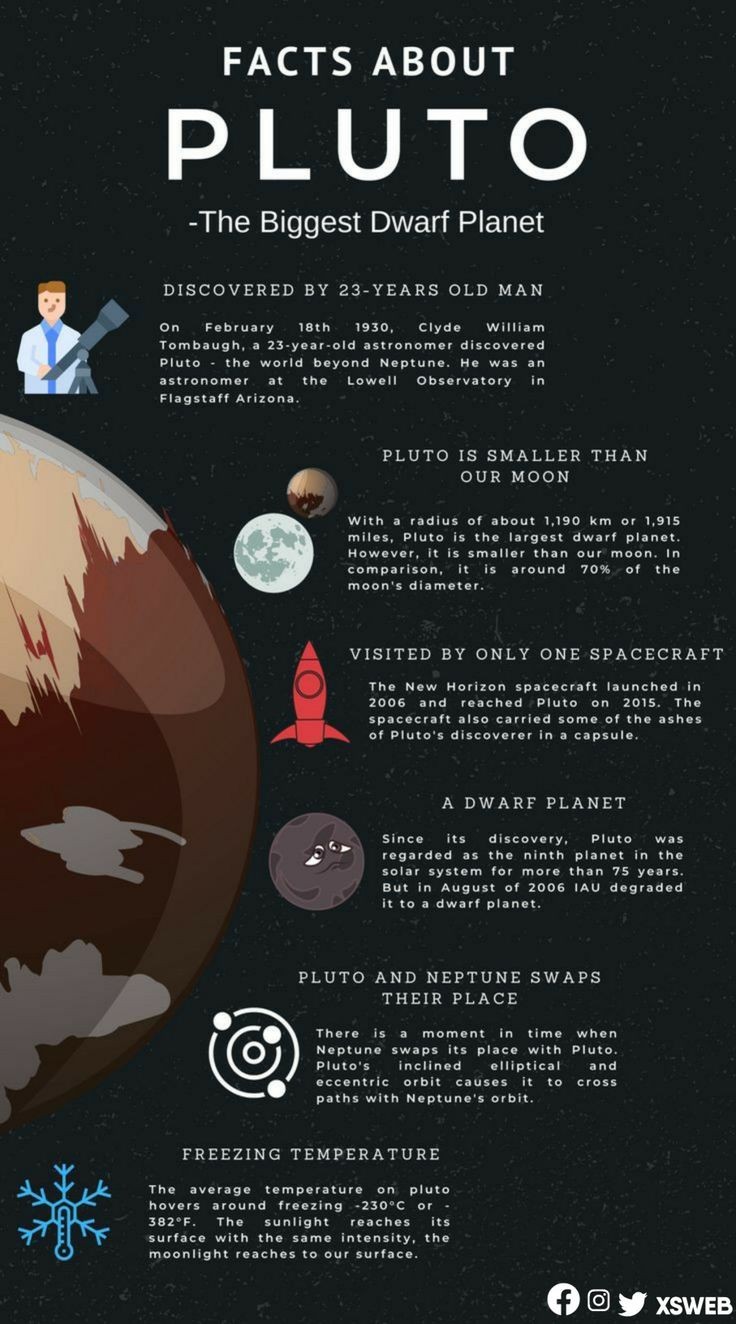Home > Sections > The Universe > Pluto
Last Updated: 14th June 2023
ARCHIVED ITEM: this page is no longer updated.
Pluto
Keywords
Pluto, dwarf planet, 1930, 2006, Charon, tidal lock, desert planet, icy, cold, Venetia Burney.
Pluto was widely considered the ninth planet in our Solar System, until the advent of a status demoting it to being a dwarf planet. Since 2006, Pluto has been classed this way, along with Eris, another body in the Kuiper Belt that is a similar size.
Planet Features
Size: Pluto is smaller than the Moon, but is still the ninth largest object to orbit the Sun.
Visual Appearance: Pluto was originally photographed poorly, due to technology not being available to us. The first pictures showed a yellow-brown appearance, but not much further details. Only recently being photographed in 2015 with any details, Pluto has a brown hue, with whitening areas. It's vast plains (it has a desert-like complexion) are made of nitrogen ice. Close-up images of Pluto now show large mountainous areas, with some peaks reaching as high as 11,000 feet (3,352 metres), which is taller than Everest on Earth.
Structure: made mostly of a silicate rock, with liquid water and icy water crust, Pluto is such a cold planet. Pluto has no magnetic field, much like Venus. There are theories that there are subsurface oceans around 100 kilometres (62 miles) deep.
Name: the name was randomly chosen by a school girl, who was interested in traditional mythology. Venetia Burney, who in 1930 was 11 years old, told her grandfather to name it Pluto. It got back to the American scientists who were working on naming the planet, and they took a vote between three names: Minerva (already used for an asteroid), Cronus (which had lost reputation), and Pluto. It was unanimously decided this would be the name given.
Interesting fact: it takes 5 hours for sunlight to hit Pluto, compared with Earth, which is 8 minutes.
More: Pluto has several moons, including Charon, which is almost as big as Pluto itself. Charon is in tidal lock (the same as the Moon to our Earth) with Pluto. Likewise, Pluto is tidally locked to Charon. They both face each other with the same surface at all times.
Pluto has a side-on rotation axis, like Uranus, and a day on Pluto is equal to almost 7 days on Earth. Even today, Pluto has yet to complete an entire orbit of the Sun, which takes 247 Earth years to complete.
Along with Charon, Pluto is sometimes considered to be a binary system, working together with Charon in its orbit.
The way Pluto is today might be the result of a collision in the early formation of the Solar System, with another celestial object of similar size.
Here is a YouTube video from National Geographic on Pluto:




 The Moon
The Moon


